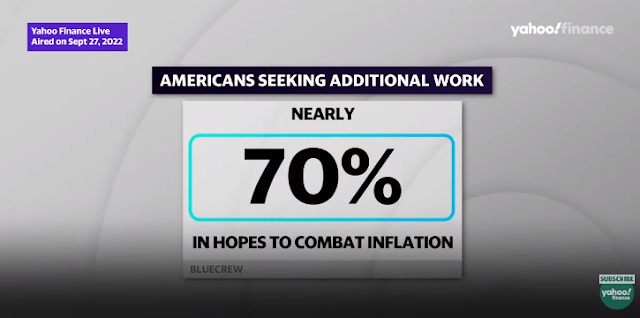Shifting Perspectives on Inflation: A Cautious Optimism Emerges
Written on
Overview of Current Attitudes Toward Inflation
Americans are entering a phase of careful optimism concerning the economy, particularly in relation to inflation trends. After enduring a lengthy period of significant price hikes, there appears to be a budding belief that inflationary pressures may be easing, despite a mixed outlook in the broader market.
Analyzing Inflation Expectations
The University of Michigan's survey acts as a key indicator for public sentiment regarding economic issues, including inflation. Recent findings indicate that consumers expect inflation to decrease to 2.9% over the next year, echoing figures from the pre-pandemic years of 2018 and 2019. This represents a slight decline from the anticipated 3% in February, suggesting that consumers are beginning to envision a return to a more stable economic environment.

Long-Term Inflation Prospects
Additional optimism is derived from long-term inflation expectations, which have adjusted down to 2.8% from 2.9%. While this change may seem marginal, it reflects significant psychological milestones that could influence public sentiment, reinforcing beliefs that inflation is indeed on a downward trend.
The Road Ahead: A Bumpy Descent?
Despite these encouraging consumer signals, recent economic data presents a more complicated landscape. Early 2024 Consumer Price Index (CPI) readings exceeded economists’ expectations, indicating that the journey towards reduced inflation may not be as straightforward as desired. Federal Reserve Chair Jerome Powell has noted that while progress is being made toward the Fed's 2% inflation goal, the path is fraught with difficulties, describing it as a "sometimes-bumpy road."
The Federal Reserve's Stance on Interest Rates
As the central bank seeks "greater confidence" in the downward trend of inflation, its approach to interest rates remains cautious. No immediate reductions in interest rates are anticipated, as the Fed continues to monitor inflation closely and assess its alignment with long-term objectives.
Economic Indicators and Consumer Sentiment
The University of Michigan survey revealed more than just inflation expectations; the broader sentiment index has improved, coinciding with positive economic indicators. This includes a higher-than-expected growth rate for the U.S. economy in the last quarter of 2023 and consistently low unemployment benefits claims. These factors support the notion of an economy regaining stability following pandemic-related challenges.
Implications for Personal Finance and Investment
Projected decreases in inflation are advantageous for personal finance and investment strategies. Lower inflation may enhance the real value of future cash flows, making fixed-payment investments like bonds more attractive. Additionally, a stable inflation environment can facilitate better long-term financial planning, empowering consumers to make informed decisions regarding savings, retirement, and major purchases.
Reading Between the Lines: Understanding Inflation Reports
With the upcoming release of the Personal Consumption Expenditures (PCE) index, economists and the Federal Reserve will closely analyze the data to understand underlying trends. Particular attention will be paid to the core PCE, which excludes volatile food and energy prices, as it offers clearer insights into fundamental inflation pressures affecting consumers.
The Bottom Line
The narrative surrounding inflation is evolving toward a more positive perspective, bolstered by increasing consumer confidence. Nevertheless, this optimism is tempered by uncertainties; while the descent from peak inflation has begun, potential surprises lie ahead. Currently, consumers have valid reasons for their hopefulness, yet vigilance and adaptability will be essential as the nation progresses through the upcoming months.
In conclusion, although the battle against high inflation is ongoing, the rising consumer confidence provides a glimmer of hope and suggests that a shared belief in economic resilience could become a self-fulfilling prophecy. Ultimately, time will reveal whether these sentiments accurately reflect economic reality. Therefore, it is a pivotal moment for both policymakers and the public to stay attuned to economic developments and to foster conditions that support lasting stability and growth.
Chapter 2: Consumer Confidence in the Economy
The first video discusses the rapid decline in Americans' confidence regarding the economy, shedding light on the underlying factors influencing this sentiment.
The second video explores why Americans are feeling less cheerful about the growing U.S. economy, examining the nuances behind public perceptions.